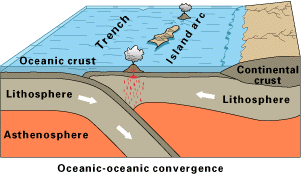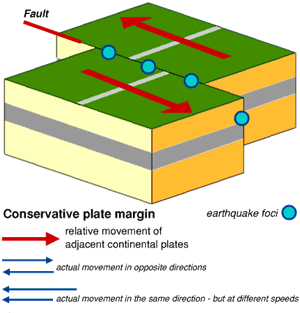Friday 13 November 2009
Lets look at a physical process!
Hurricane Katrina is an example of a physical process.
Monday 2 November 2009
Teachers TV: KS3 Geography for Pupils - Migrant Stories
visit http://www.teachers.tv/video/2737 for more information.
Thursday 29 October 2009
migration again...
Migration...
Thursday 22 October 2009
Now lets focus on Human processes!

“Success in education is the most important reason. Migrants come in search of a better life and hence are highly motivated, hardworking and adaptive and provide labour for economic development in more productive sectors,”

Conditions that drive people to leave their homes Examples:
Land scarce in home country Political and/or religious persecution Revolutions Poverty
Conditions that attract people to a new area Examples:
Promise of freedom (religious and political) Hope for a new life Industry Jobs Land “Streets paved with gold”
Tuesday 20 October 2009
Another example of how human and physical processes can interact...... RIVER FLOODING...
As you looked at the geography of festivals, you would have noticed how both human and physical processes can interact to cause problems!

Another example of when human processes can seriously affect physical processes is the use of flood plains for building houses.

Monday 19 October 2009
Why, what, how ?????


Using festivals!
Focus on Key Concepts:
Place, Space, Scale, Physical and human processes, Geographical enquiry, Geographical and visual literacy, Geographical communication, Environmental interaction and sustainable development
This is a really interesting idea of using music festivals to help students understand geographical issues. Here we can look at the physical aspects of glastonbury but also highlight the human processes which occur.
The ‘Greening Glastonbury' lesson focuses on the impacts that a large scale event, such as Glastonbury, can have on the environment. Students also consider management measures which can be employed to create a more sustainable use of the environment and how environmental impacts may be reduced.
Mud glorious mud!' There has been much publicity regarding flooding at festivals in recent years. Within this lesson, students can interpret photographs and empathise with people caught up in festival flooding. Tasks enable students to investigate and assess the flood risk, at selected festival sites, and produce a flood risk report.
‘Design your own festival!' As a finale to the unit, students are able to utilise many of the skills, vocabulary and knowledge gained from previous lessons to design their own festival. Using decision making skills, students can decide on a suitable location for their festival considering site and situation factors as well as flood risk.
Human Processes
Thematically, human geography may be concerned with an array of human enterprises, from villages and cities, schools, health, commerce and trade, to name a few. The spatial human architecture of a variety of institutions and practices unites these entities within the discipline. For example, a human geographer might be concerned with the geographic patterns of communicable diseases, school performance in rural versus urban school districts or the rise of innovative
Fields of human geography
The main fields of study in human geography focus around the core fields of:
Cultural
Development
Economic
Health
Historical
Political
Population
Tourism
Urban
visit this link to find out more: http://www.viswiki.com/en/Human_geography
Tuesday 13 October 2009
Tuesday 6 October 2009
Physical processes - Tectonics

Along the boundaries of these plates are zones of interaction, where plates can meet and create a plate margin.
There are a number of different types of plate margins; and it is along these that physical processes can have an affect on the landscape.
Convergent (Destructive plate) boundaries:
Destructive plate boundaries can occur along any of the three plate margins (with both oceanic and continental crust). The three pictures below show the processes that occur along a destructive plate boundary.
As this diagram shows, when two continental crusts collide, fold mountains are created, altering the landscape of a country. An example of this is the Himalayas.
As one plate submerges under another, the friction, pressure and heat can cause both earthquakes and volcanoes; both of which can lead to changes in the landscape.
Conservative (Transform) plate boundaries:
Conservative plate boundaries occur when two plates are rubbing alongside each other, such is the case of the San Andreas fault in California. The friction and pressure built up as the plates travel horizontally alongside each other can cause earthquakes.
Divergent (Constructive) plate boundaries:
Constructive plate boundaries occur when two plates are pulling away from each other, creating a space where new material is created. Along these place boundaries, both earthquakes and volcanoes can happen. Also, mid ocean ridges are often formed, as is the case in the Atlantic ocean, as the picture below portrays.

Tectonic processes, as a physical process, can lead to change in places, landscapes and societies. They can greatly affect populations and are difficult to predict, prevent and manage.
If you would like to find out more about this topic please follow the link to a great page about all of these concepts... http://www.geologyrocks.co.uk/tutorials/plate_tectonics_introduction.
Sunday 4 October 2009
Physical processes: 4 main categories
1. Atmosphere (climate, meteorology)
2. Lithosphere (plate tectonics, erosion, soil formation)
3. Hydrosphere (circulation of the oceans/hydrological cycle)
4. Biosphere (plant and animal communities and ecosystems)http://beri.espp.msu.edu/images/biogeochemicalcycle.gif

By understanding the relationship between these processes a person can begin to think as a gegrapher. Understandings can be devloped as to how features are formed, how plants and animals adapt to different climates, why physical features may change. this leads us to understand how the earth serves as a home for all flora and fauna.
knowledge and understanding of physical processes on the earths surface is crucial as these processes affect human decision making, e.g. locations of safety in an earthquake prone region.
humans can then use this knowledge and understanding to make predictions for the future. We can understand how climate change is linked to differences in economic development around the world. Physical processes may lead to the formation of natural resources and help us to understand human processes which react to physical processes.
VIDEO: HOME
looking at the relationship between physical and human processes taking place on our planet
(video is fairly long - but worth it!)
http://www.youtube.com/watch?v=jqxENMKaeCU



